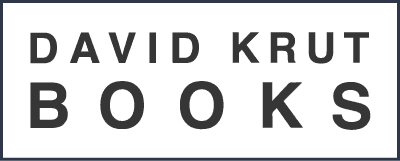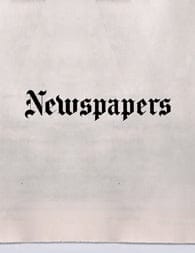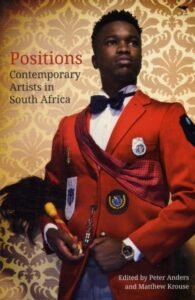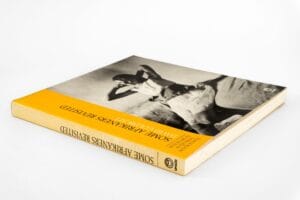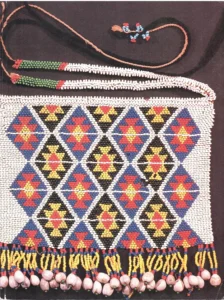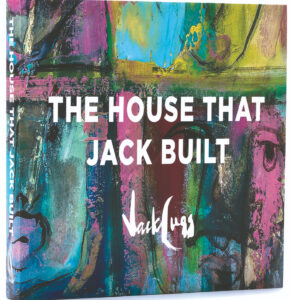Showing 33–48 of 108 results
-

R1890Marlene Dumas’s works respond more than ever to the uncertainty and sensuality of the painting process itself. Allowing the structure of the canvases and the materiality of the paint greater freedom to inform the development of her compositions, the artist has likened the creation of these works to the act of falling in love: an unpredictable and open-ended process that is as filled with awkwardness and anxiety as it is with bliss and discovery.
-

R50Call and Response is a solo exhibition of Compressionist prints, both digital and traditional, performatively produced with Lightworks Studios and at the David Krut Print Workshop, in Johannesburg, South Africa.
-

R90The media as the medium. The medium is the message. These two propositions—the second from Marshall McLuhan—define the principal axes on which South African artist Siemon Allen (born 1971, Durban, South Africa) articulates his archivally-driven yet self-reflexive practice.
-

R950Foreword by David Bowie. Norman Catherine is considered to be at the forefront of South African contemporary art with his rough-edged comical and nightmarish forms rendered in brash cartoon colours; his idiosyncratic visions and his dark cynicism and exuberant humour.
-

R400For the past decade, in an ongoing project titled The Lost Men, renowned artist Paul Emmanuel has challenged conventions around war memorials. He has questioned which soldiers are memorialised and which are erased, and the stereotypes around soldiers and masculinity. Featuring artworks from his three iterations of The Lost Men, Paul Emmanuel Men and Monuments highlights vulnerability, an aspect of masculinity so often denied by history and society.
-
 Out of stock
Out of stock
R400Ranging from resistance to education, contemporary artists are increasingly raising opposition to economic pressure, radical social change and rapidly changing identities. How does the local contemporary art scene respond to the worldwide dynamics of globalisation? Which social, political and cultural positions do individual artists adopt? This volume presents views of some of South Africa’s most prominent artists, writers, choreographers, photographers and musicians. Produced in direct dialogue with journalists and cultural scientists from the respective art scenes, developments within today’s cultural flashpoints are illuminated in interviews, portraits and essays.
Throughout, the focus is on the artists’ individual perspectives, not theoretical or historical concepts, with their specific approaches and different forms of expression they give insight into the pressing issues of South African society, showing how political art is positioned in the post-apartheid era.
-

R1300The work of David Goldblatt – as recipient of the 2006 Hasselblad Foundation Award undoubtedly South Africa’s most prominent active photographer – reflects a life-long exploration of the relationship between individual South Africans and the society they live in. His first extended photographic essay was compiled in the 1960s. When it was finally published in 1975 as Some Afrikaners Photographed, the book created quite a stir locally. Eventually most of the small print-run had to be sold off for a song.
-
 Out of stock
Out of stock -

R360This catalogue accompanies Steven Cohen’s first exhibition at Stevenson Johannesburg – an intense meditation on loss, grief and absence, following the death of his partner and artistic collaborator, the dancer Elu.
-
 Out of stock
Out of stock
R185Ten Years of Collecting (1979-1989), David Hammond-Tooke and Anitra Nettleton, softcover, published by the University of the Witwatersrand, 1989, tearing, creasing and wear to cover, shelf wear.
-
 Out of stock
Out of stock
R1000An illustrated biography of Jack Lugg, influential South African artist and educator.
-

R150A first monographic catalogue is devoted to Kevin Brand the prizewinner of the Mercedes-Benz Art Award for South African Art Projects in Public Space 2008.
-
 Out of stock
Out of stock
R650Beneath the public face of Dunn’s work, the author contends, lies a private world of even greater significance, a world in which the essential elements of our being are examined, depicted and, by implication, commented upon – all with a gently satirical eye. It is this re-assessment which forms the basis of Chris Perold’s book, illustrated with reproductions and commentaries on more than one hundred of the artist’s paintings.
-
 Out of stock
Out of stock
R120The Standard Bank Foundation of African Art, housed at the University of the Witwatersrand Art Galleries was begun ten years ago. This exhibition, one of the largest of its kind ever held in South Africa, commemorates a partnership which expresses the true ideals of both private enterprise and public education in this country.
-

R250The exhibition opened on the eve of South Africa’s Covid-19 lockdown, and the catalogue essay by Mwenya B Kabwe asks what the Gymnasium series gives us ’at a time like this, a time of such massive upheaval’. Interweaving a fabular tale with her insights into Nkosi’s lens on this moment, Kabwe write: ’Nkosi tells us that when we are talking about race, we are never just talking about race. When we are talking about infectious diseases, we are actually talking about the biological expression of social inequality.’ She continues:
-
 Out of stock
Out of stock
